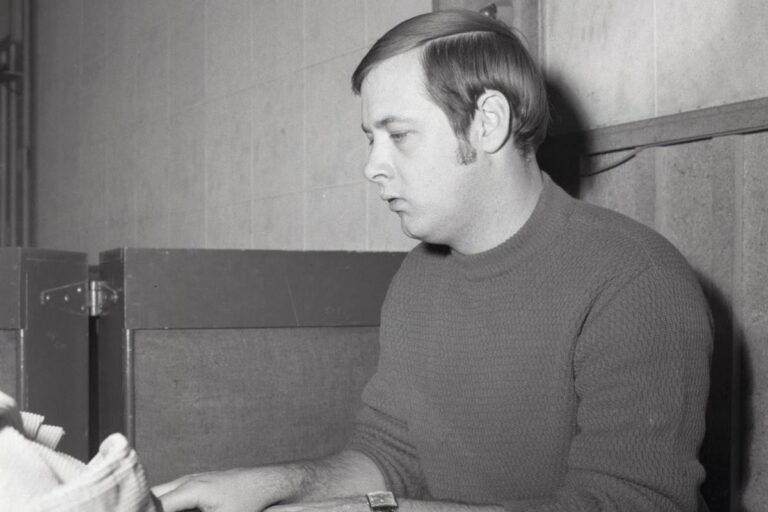The ’70s were defined by superstar recording acts who soared to eye-popping new commercial heights.
Six of the 10 best-selling albums of all time arrived in this decade, including Pink Floyd‘s The Dark Side of the Moon (No. 4), Eagles‘ Their Greatest Hits (1971–1975) and Hotel California (Nos. 5-6), Fleetwood Mac‘s Rumours (No. 8), Meat Loaf‘s Bat Out of Hell (No. 9) and Bee Gees‘ Saturday Night Fever (No. 10.) Their Greatest Hits (1971–1975) made history as the first-ever platinum-selling album in 1976.
But not every band could claim the same consistency or levels of success. Some were struck by member defections, others by death. Some simply enjoyed homegrown fame but didn’t enjoy the same wave of attention elsewhere. Others just had a run of very bad luck.
READ MORE: The ’70s Biggest One-Hit Wonders
Taken together, they form a list of ’70s Bands That Should Have Been Bigger. Many of them achieved some measure of fame back then but failed to build on that momentum in the years that followed. A few were unfortunately more influential than they were necessarily beloved by the masses.
But, as shown by the following countdown of the Top 5, that doesn’t mean they weren’t important and quite deserving of another look back.
No. 5. Poco
Michael Ochs Archives, Getty Images
These country-rock pioneers released a trio of Top 40 albums, capped by 1978’s gold-selling No. 14 hit Legend. Poco had four Top 40 singles over a decade beginning in 1979 with “Crazy Love” and “Heart of the Night.” Key lineups also featured former Buffalo Springfield members Richie Furay and Jim Messina and future Eagles members Randy Meisner and Timothy B. Schmit – yet those bands have earned far more critical applause. Poco became eligible for Rock Hall induction in 1995, but had never been nominated when stalwart members Rusty Young and Paul Cotton both died in 2021.
No. 4. Sweet
YouTube / Official Sweet Channel
Sweet left behind bubblegum ’60s pop for glam rock and then hard rock in the ’70s with the best-known lineup of frontman Brian Connolly, guitarist Andy Scott, bassist Steve Priest and drummer Mick Tucker. By the midpoint of the decade, Sweet had issued Top 30 albums in both their native U.K. (1974’s Sweet Fanny Adams) and in the U.S. (1974’s Desolation Boulevard and 1976’s Give Us a Wink), along with a signature single in the international Top 5 smash “The Ballroom Blitz.” But then Connolly left for a solo career after “Love Is Like Oxygen” hit in 1978. By the ’20s, Scott was the only surviving member.
No. 3. Little Feat
YouTube / The Midnight Special
Little Feat somehow survived the 1979 death of frontman Lowell George, but they never again matched the commercial heights of roots-rocking albums like 1973’s gold-selling Dixie Chicken and 1974’s Feats Don’t Fail Me Now, the first of four consecutive Top 40 hits to conclude the ’70s. George arrived with “Willin,'” which featured drug references that he always insisted had gotten him fired by Frank Zappa. The Byrds and Linda Ronstadt eventually covered the song. Still, Little Feat remained mostly under the mainstream radar, despite continuing into a new century with well-regarded albums like 2024’s Sam’s Place.
No. 2. 10cc
Michael Ochs Archives, Getty Images
Featuring Lol Creme, Kevin Godley, Graham Gouldman and Eric Stewart, 10cc was really a British art-pop supergroup. That may have ultimately limited their commercial impact. Everyone wrote and played multiple instruments, sending five straight ’70s albums into the U.K. Top 10. The U.S., however, was harder to crack – probably because their distinct individual approaches made 10cc harder to pin down. They finally broke through with 1975’s “I’m Not in Love” and 1976’s “The Things We Do for Love,” both Billboard Top 5 singles. But then Godley and Creme left for a career in video directing, and 10cc quickly began to lose momentum.
No. 1. Badfinger
Michael Putland, Getty Images
Badfinger was given a huge initial boost by the Beatles, who signed the group and helped them complete Paul McCartney‘s unreleased track “Come and Get It” as a single. Badfinger then opened the ’70s with three consecutive basically perfect Top 15 U.S. hits, including 1971’s No. 4 smash “Day After Day,” and saw Harry Nilsson take their song “Without You” to No. 1 in both the U.K. and America in 1972. But then everything fell apart amid a financial meltdown and Badfinger lost both of its main songwriters to suicide. The final surviving classic-era member continued forward with Joey Molland’s Badfinger until he died in 2025.
Top 100 ’70s Rock Albums
From AC/DC to ZZ Top, from ‘Bridge Over Troubled Water’ to ‘London Calling,’ they’re all here.
Gallery Credit: UCR Staff



